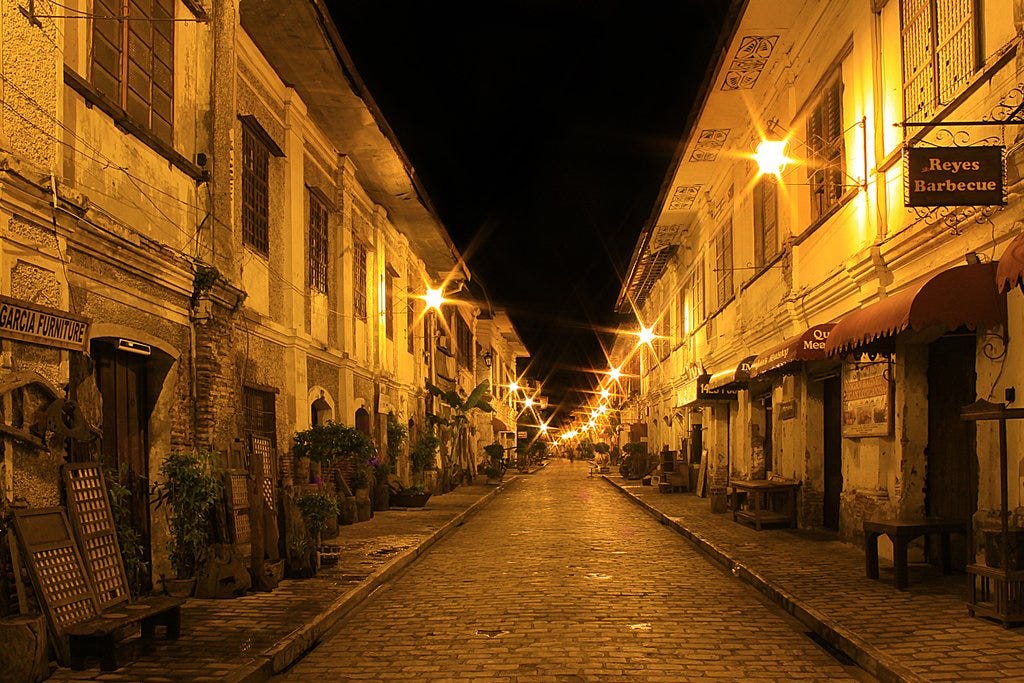Vigan, Philippines – Travel Tips
Category
Categories
Popular Articles

**Overview of the Destination:**
Vigan, a UNESCO World Heritage Site located in the Philippines’ Ilocos Sur province, is famed for its well-preserved Spanish colonial and Asian architecture. This charming city offers a unique blend of historical sites, beautiful landscapes, and delicious cuisine. Stepping into Vigan is like stepping back in time – it gives you a glimpse of what things were like during the Spanish colonial era with its cobblestone streets and antique houses.
**Best Time to Visit:**
The best time to visit Vigan is during the dry season from November to April. The weather is usually sunny, making it perfect for sightseeing. Some of the festivals that could be worth planning your trip around include the Vigan City Fiesta in January or the Viva Vigan Binatbatan Festival of the Arts in May. Traveling during the off-peak season, from June to October, could give you the benefit of lower hotel prices and fewer crowds.
**Climate & What to Pack:**
Vigan’s climate is tropical, with the temperature varying from 24°C to 33°C throughout the year. Expect a mixture of rainy and dry seasons. Since it can get pretty hot, pack light clothes, sun protection like hats and sunblock, a portable fan, and an umbrella, not just for the rain but also for UV protection. Don’t forget a good pair of walking shoes for exploring the city!
**Getting There:**
The nearest major airport to Vigan is the Laoag International Airport which is about 80 km away. From the airport, you can hire a taxi or take a bus to reach Vigan. For overseas visitors, please check the Philippine’s current visa policy. Generally, nationals from 157 different countries are allowed to enter the Philippines without a visa for a stay up to 30 days.
**Getting Around Locally:**
Vigan has a variety of local transportation options. Public transit includes jeepneys and tricycles while horse-drawn carriages, known as “kalesa,” offer a more unique and historical type of transportation. Taxis and rideshare apps are not available. If you’re willing, renting a bicycle is another cool and environmentally-friendly way to explore the city.
**Safety Tips:**
Vigan is generally a safe city for tourists. However, as with any other place, it’s essential to maintain common sense safety precautions. Avoid isolation, particularly at night, and always keep your belongings secure. There aren’t many tourist scams in Vigan, but familiarize yourself with standard prices to avoid overpaying. As a sign of respect, dress modestly especially when visiting religious sites.
**Top Things to Do & See:**
In Vigan, heritage is come alive. Start with the historic Calle Crisologo, a must-see for its well-preserved Spanish-era houses. Visit St. Paul Metropolitan Cathedral, a baroque-style church built in 1800. The Pagburnayan Jar Factory, where local artisans create pottery in the traditional way, is also worth a visit. Don’t forget the Baluarte zoo and the Salcedo Market for local produce.
**Where to Stay:**
Vigan offers wide-ranging accommodation styles matching all budgets. For luxury stays, Hotel Luna and Casa Rica Hotel provide well-equipped rooms and amenities. The mid-range, try Granpa’s Inn or Balai Mestizo Travelodge. For budget options, Green R Hotel and Vigan Plaza Hotel are great choices. Staying within the Vigan City proper allows you easy access to most tourist spots.
**Food & Local Cuisine:**
Your trip to Vigan won’t be complete without tasting their iconic dishes. Try the Vigan Empanada, a local version of the Spanish classic. Bagnet, a crispy deep-fried pork dish, is also famous. You can find delicious meals in every corner, from street food vendors to local eateries to fancy restaurants.
**Cultural & Practical Tips:**
The official currency is the Philippine Peso and English is widely spoken. Always ask for the Wi-Fi password, most establishments have free Wi-Fi. Tipping is not mandatory but appreciated in better restaurants. The standard voltage is 220V, and they use type A, B, or C plugs.
**Sustainable or Responsible Travel Tips:**
Respect local culture and customs, especially when interacting with the locals. Preserve the city’s heritage by not littering and obeying rules regarding historical sites. Opt for reusable items such as water bottles and shopping bags to minimize plastic usage.
**Travel Tip:**
To truly enjoy Vigan, immerse yourself in its rich history and culture. Don’t rush; take the time to appreciate this unique city, from its architectural wonders to its delicious cuisine. And don’t forget to try riding a kalesa for a more authentic Vigan experience.










